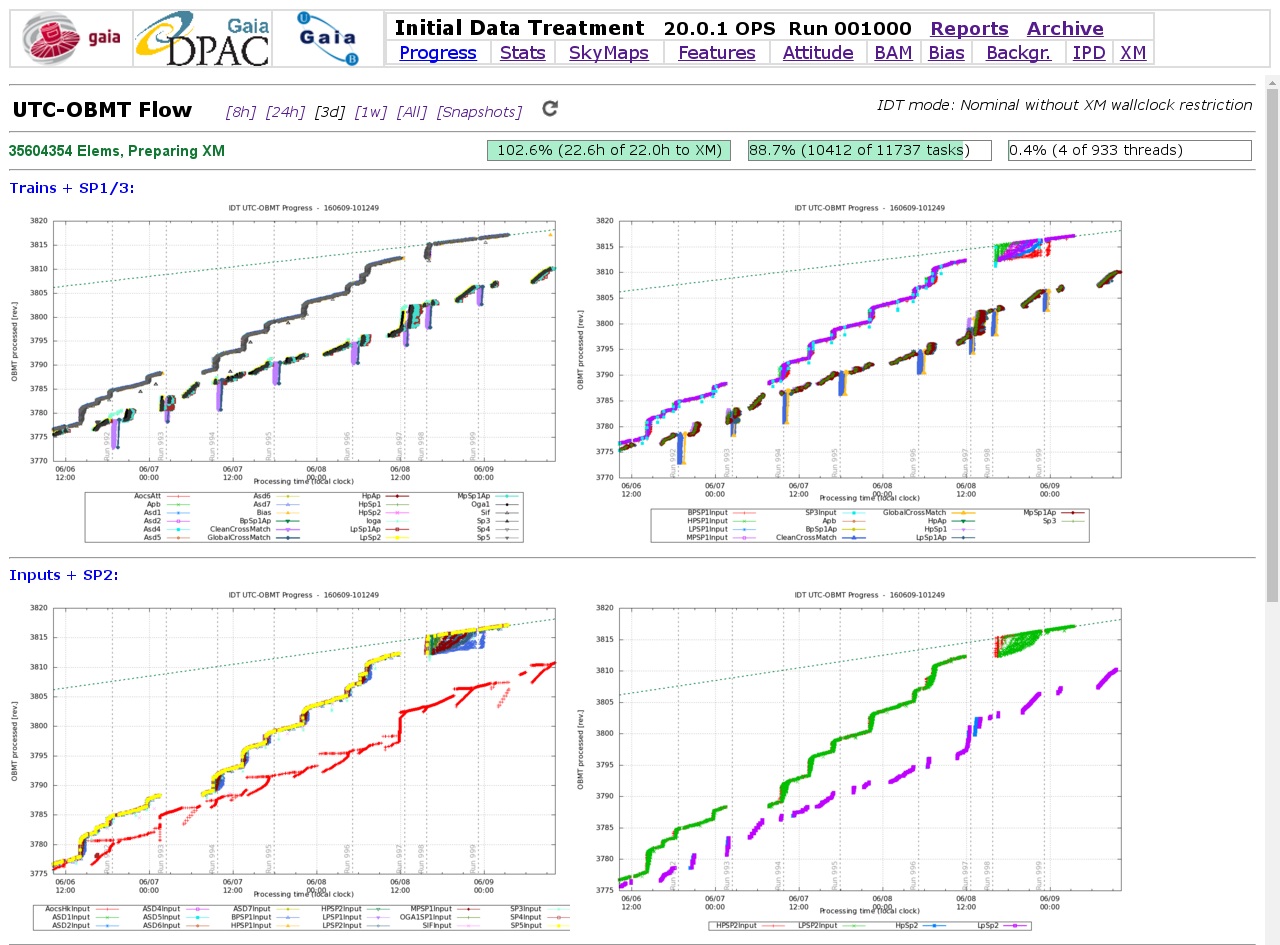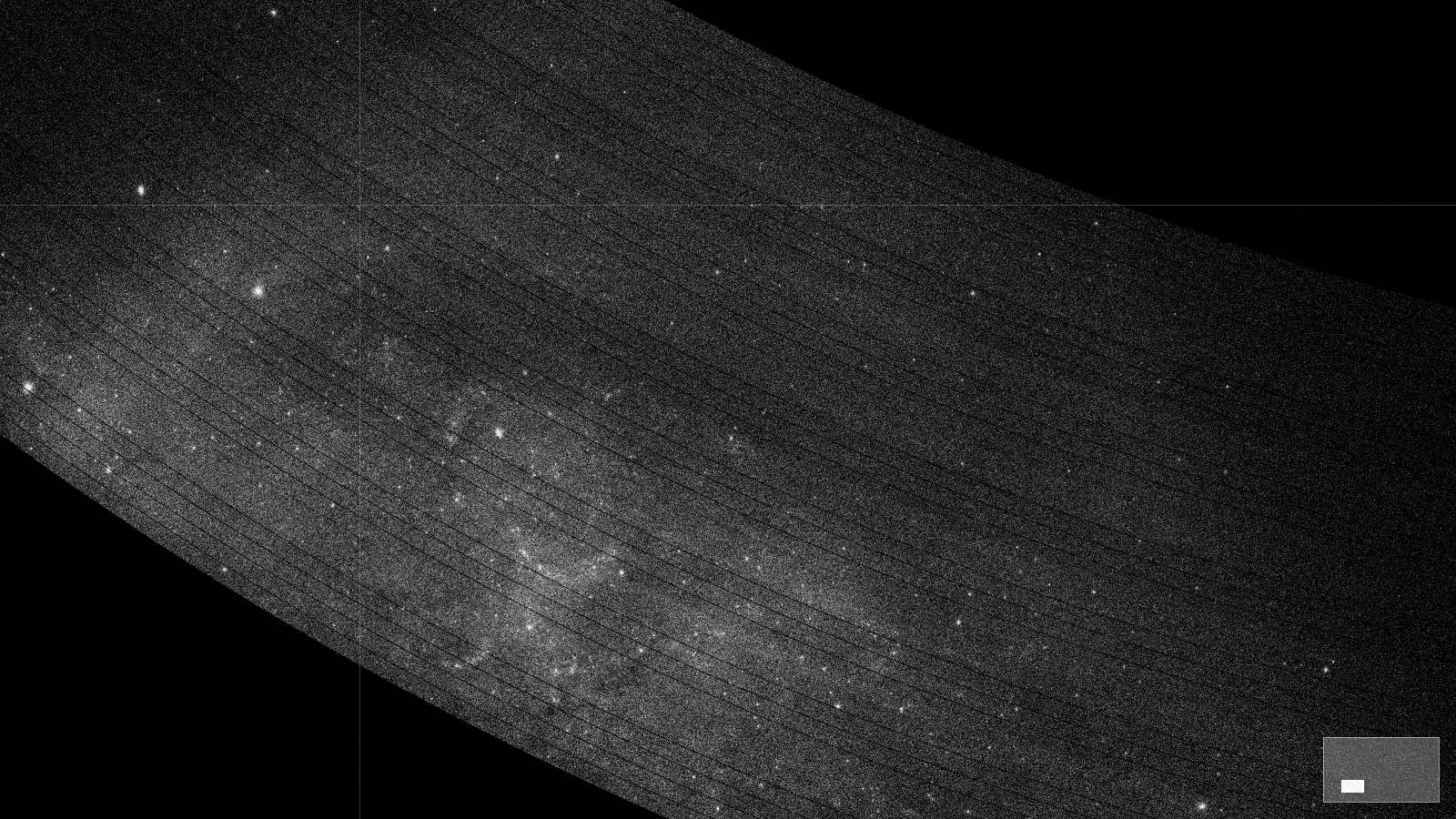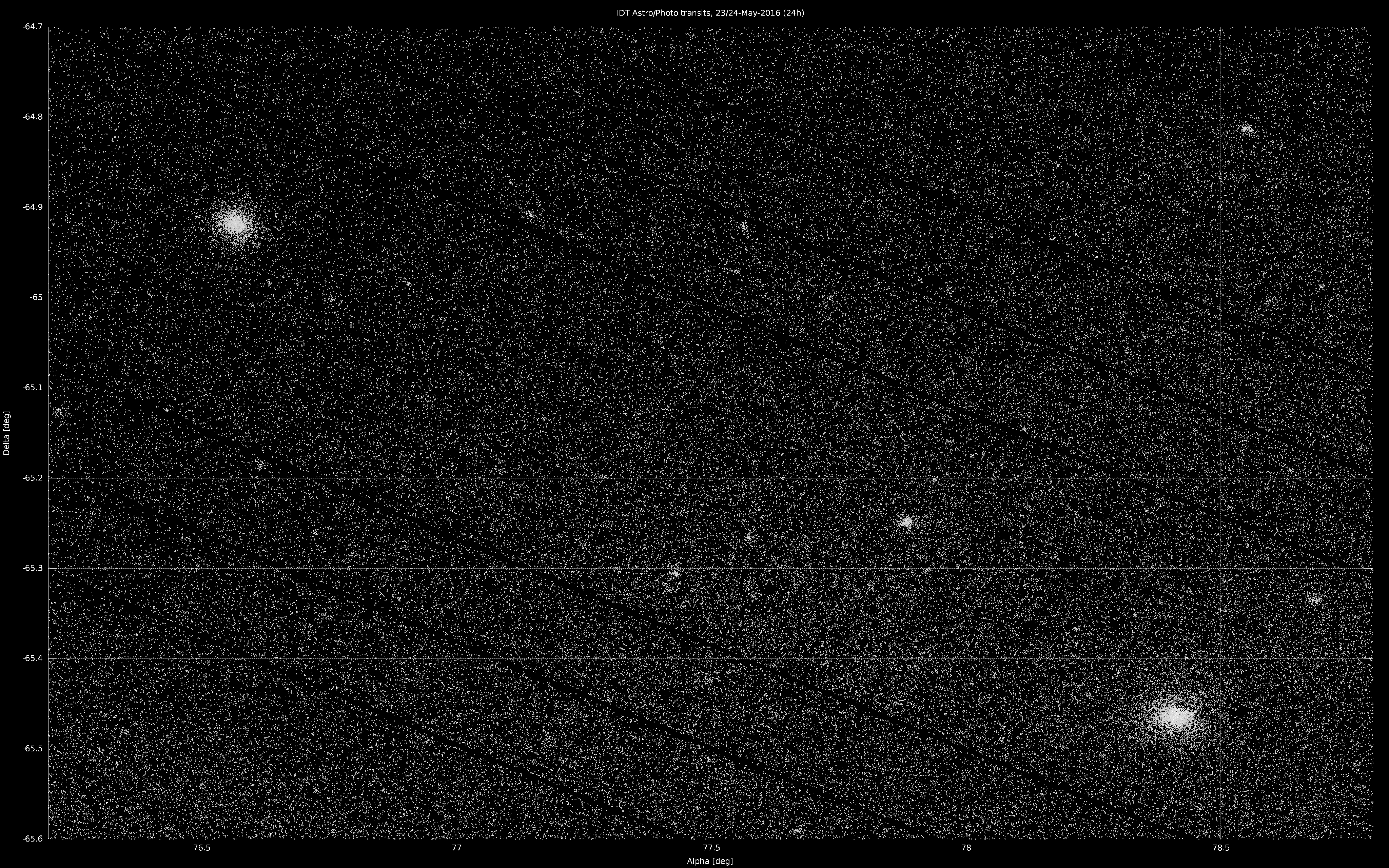IoW_20160610 - Gaia
Image of the Week |
|||
Run 1000 of the Initial Data Treatment system |
|||
 |
|||
|
Figure 1:IDT web-based front-end tool showing the 1000th IDT run. Click here to see how the monitoring system behaves during a few hours of the mission. |
|||
|
Yesterday, almost two years after the start of Gaia's nominal operations, the Initial Data Treatment system (IDT) finished its 1000th run - a remarkable milestone for this critical system in charge of the daily data processing in the Gaia Data Processing and Analysis Consortium (DPAC). Figure 1 shows the main page of the tool, which shows the moment when Run 1000 was closed. One way to identify Gaia measurements is their acquisition time in 'mission revolutions' (spins of Gaia around its rotation axis). The four main plots of Figure 1 illustrate the mission time (vertical axes) of the several data types being received or processed at a given wallclock time (horizontal axes). Here IDT was recovering from a downtime to perform some maintenance, quickly reaching again the 'real-time line' (the dashed diagonal line on each plot). Vertical dashed lines indicate the Runs done. The progress indicators at the top show the numbers of 'Elementaries' (intermediate data outputs, one per measurement), the system status, the fraction of Runs done, the pending processing tasks, or the number of computing threads being used. |
|||
 |
|||
|
Figure 2: Sky-coverage of a typical IDT run. Click on the image for a high-res version. |
|||
|
To illustrate the daily workload and accuracy of the IDT system and Gaia, Figure 2 draws the equatorial sky coordinates (right ascension and declination), as well as the onboard-estimated brightnesses, of all objects detected, measured, downlinked and processed during a typical day, having "only" 43 million objects in this case (some days over a hundred million objects can be reached). The sky coordinates are those determined by IDT in real-time, which are already very accurate (around 100 milliarcseconds, or 1/36000th of a degree). |
|||
 |
|||
| Figure 3: Zoom of Figure 2. Click on the image for a high-res version. | |||
|
Figure 3 shows a zoom into the southern region, where some sky features and structures can be seen, as well as some further "strips" corresponding, in this case, to the seven CCD rows (or "cameras") of the Gaia instruments. |
|||
 |
|||
| Figure 4: Zoom of Figure 3. Click on the image for a high-res version. | |||
|
Finally, Figure 4 shows another zoom (with increased dot sizes for better visibility) on a couple of globular clusters, NGC 1831 and NGC 1866, the individual stars of which are detected and measured by Gaia without any problem. Only at this zoom level, individual objects as detected by Gaia can be seen. Full-resolution images of Figures 2 and 3 can be downloaded here. |
|||
|
Credits: ESA/Gaia/DPAC/UB/IEEC [Published: 10/06/2016] |
|||
- Removed a total of (14) style text-align:center;
- Removed a total of (9) style text-align:justify;
- Removed a total of (1) border attribute.
- Removed a total of (1) cellpadding attribute.
- Removed a total of (1) cellspacing attribute.
Image of the Week Archive
- Removed a total of (1) border attribute.
- Removed a total of (1) cellpadding attribute.
- Removed a total of (1) cellspacing attribute.








































 Sign in
Sign in
 Science & Technology
Science & Technology
